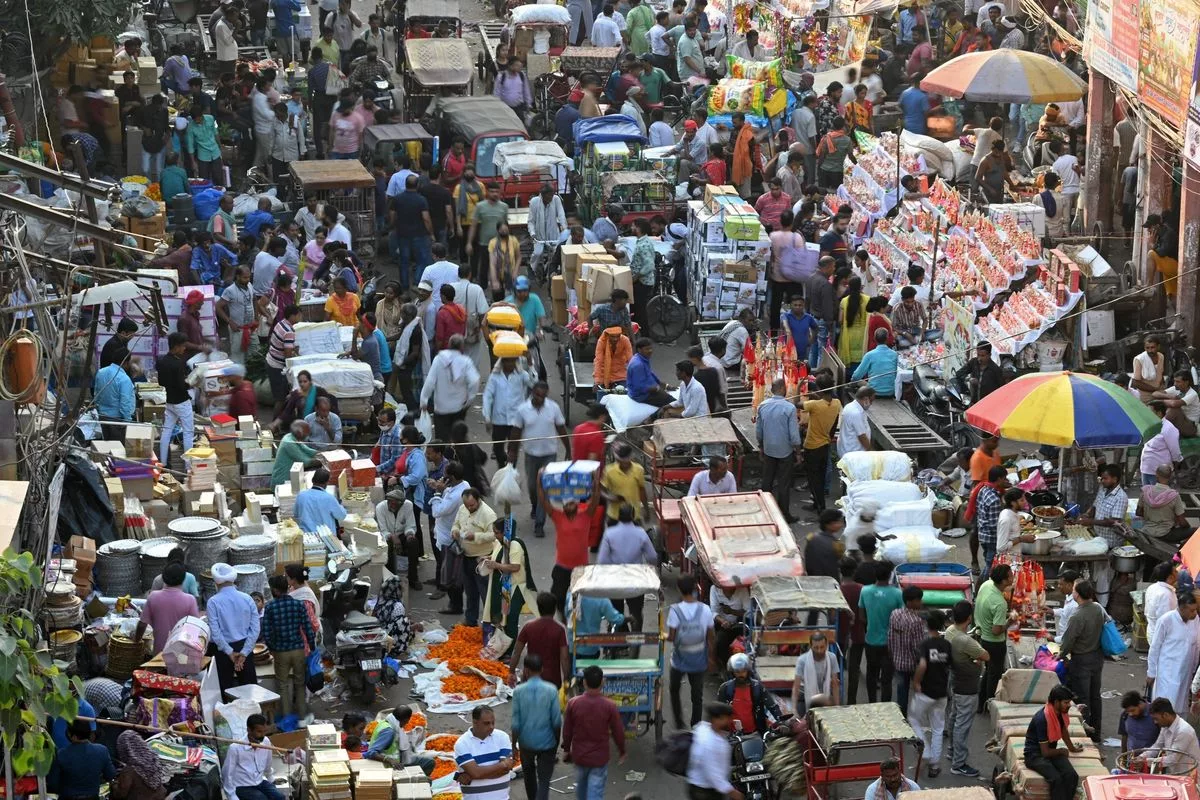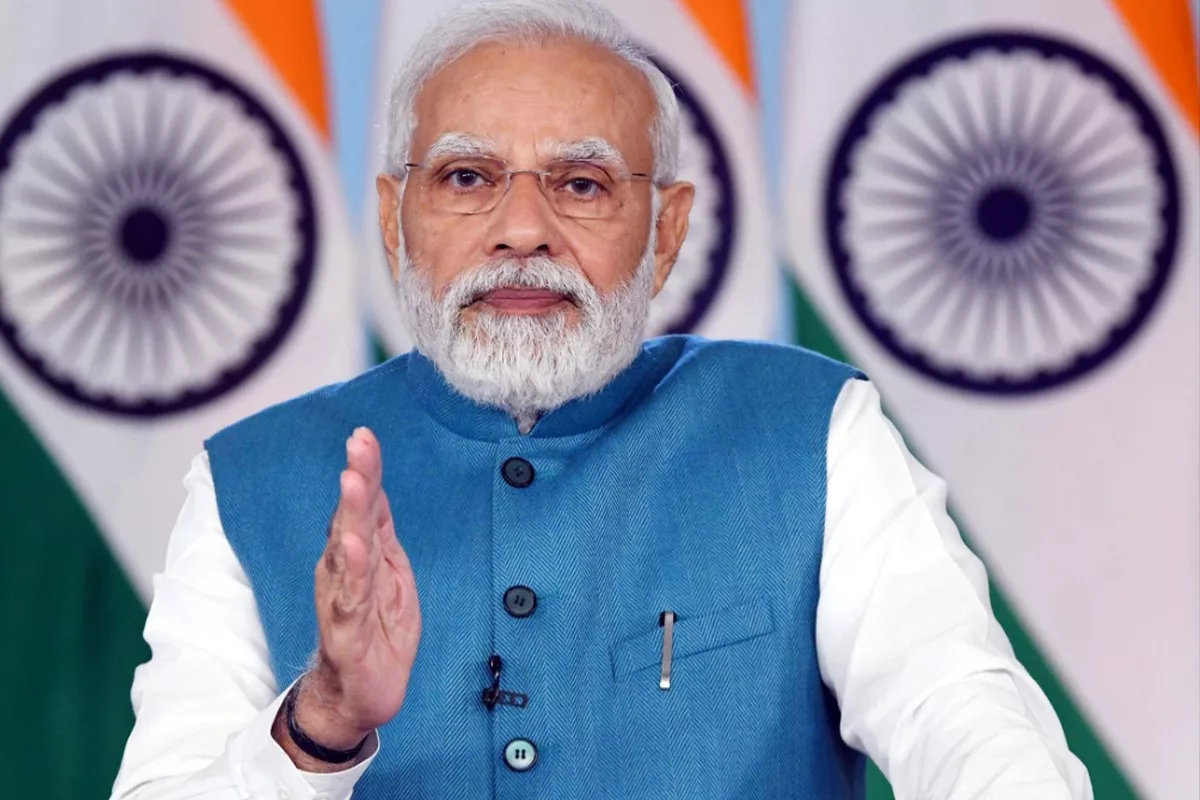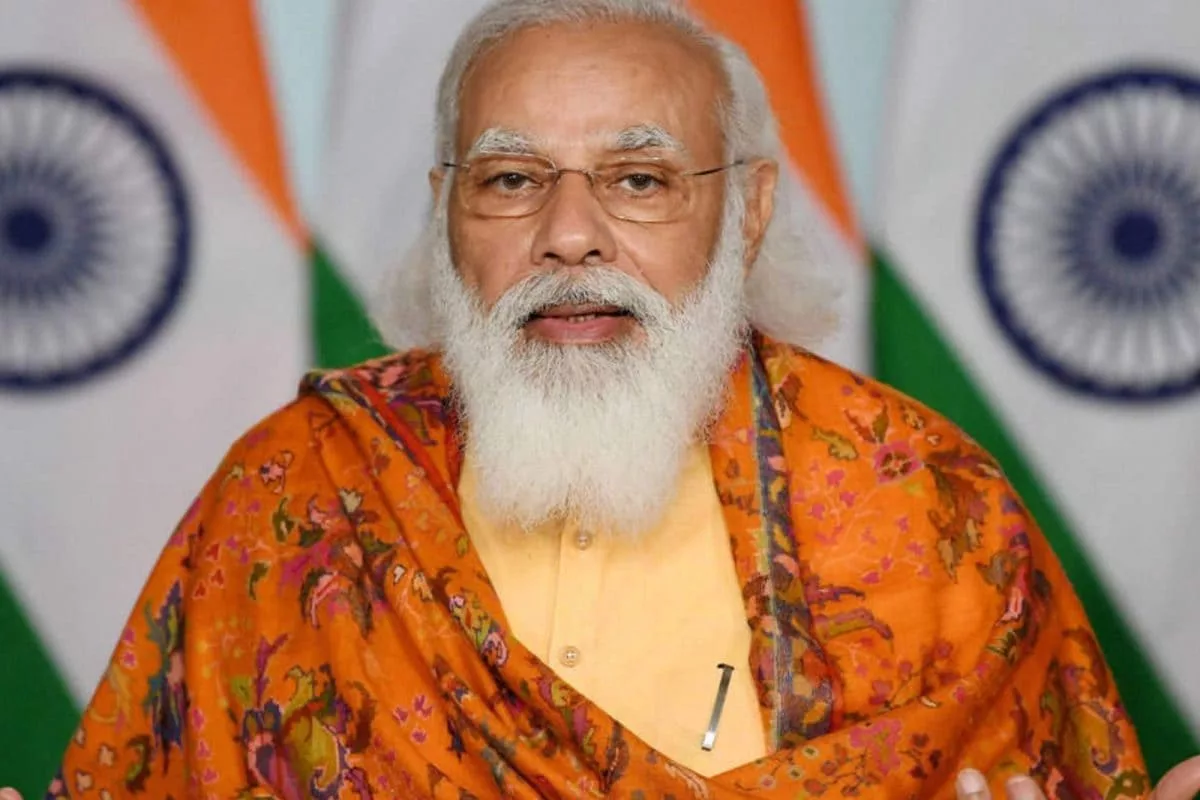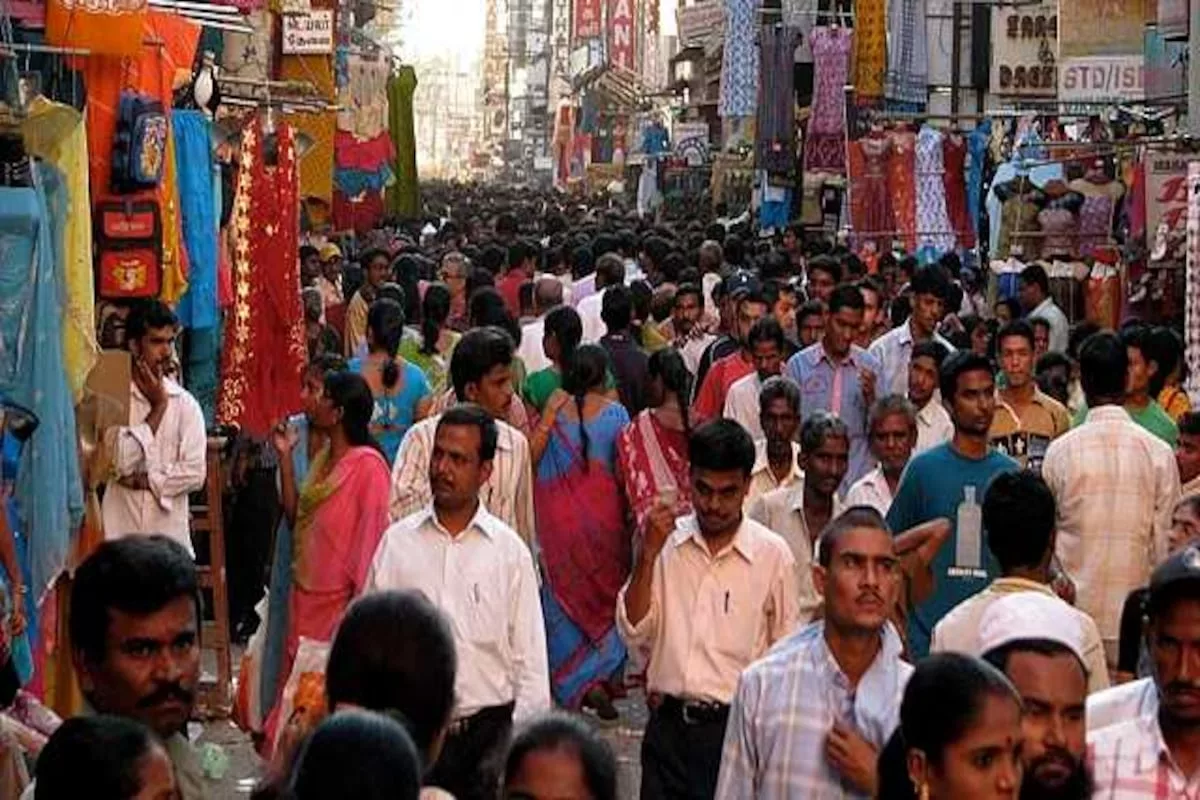Demography, Democracy, And Development In India’s 3-D Distortion
In recent days, Tamil Nadu's Minister for Industries, Thangam Thennarasu, who holds the Tamil Development and Information Department's portfolio, inaugurated the school buildings for reviving Tamil medium schools, which had been closed for lack of patronage by the Gujarat government.

Demography, Democracy, And Development In India’s 3-D Distortion
While the host government claims that Tamil medium schools suffer from fewer students, it is still being determined how Tamil and Tamil development will improve only because of new classrooms.
Tamils were migrating from the erstwhile Madras Presidency’s unified Salem district to Ahmedabad, Bombay (now Mumbai), to work in the new textile mills being built.
They were also ancestors of those from the present-day states of Andhra Pradesh and Karnataka. During the British era, Tamils migrated mainly as indentured labour to Sri Lanka, Malaysia, and even South Africa as indentured labour to work on tea and sugarcane plantations.
It was during this period that the illiterate population was moving to factory jobs, particularly in Bombay and Ahmedabad, while the literate and semiliterate population were making a more honourable living in New Delhi or Karachi, not to mention Rangoon, the capital of Myanmar, as well as Kolkata, both of which are located in the eastern part of the country.
Several decades after Madras became a job provider, it became one of the most popular destinations for local migrants. The Indian National Congress (INC) was founded by Buckingham & Carnatic Mills in 1878, the first mill in Chennai.
When the Mumbai-Ahmedabad mills began pushing handloom textiles to the sidelines, Madras had its first labour union and major strike at Binny & Co’s B & C Mills.
Dalit leaders quit the Madras Labour Union during the strike, one of the first in the country, established in 1918. The strike also slowed down the city’s economy.
The municipality of Ahmedabad, therefore, runs language medium schools in Tamil, Telugu, and Malayalam, among others. It is implicit in this construct that Ahmedabad’s social infrastructure provided education to illiterate migrant labour.
In addition, South Indians and Tamils are a significant part of the constituency of Narendra Modi in Ahmedabad.
Moreover, and independently of all the issues above, Ahmedabad is the only municipality to operate a medical college (of which it is now a corporation).
Roles Reversed
In the past, attracted South and East Indians to Mumbai and Delhi because of industrial jobs as well as the British-Indian government, but today, the roles have been reversed.
Dravidian Tamil Nadu offers a variety of quality street-corner restaurants, and it will be more convenient if you can converse in Hindi while eating out or having food delivered.
Tamil (or Malayalam, Kannada, or Telugu) is a fast language they pick up from their Hindi homelands. The issue is one of survival and growth for them. Compared to Gandhi’s time, the present-day migration is different.
There is a pressing need for more skilled labour, especially unskilled and semi-skilled work, in factories, hotels and homes, as blue-collar work is not readily available.
Many critics of the Dravidian model claim Tamil Nadu needs those Hindu boys because the locals drink the state-owned TASMAC liquor. In that case, why are there labour shortages in other South Indian states as well?

A more accurate assessment would be that the coastal states suffered the consequences of development coming first, and the hinterland suffered the impacts of development coming last. In 1950, Bharat, today’s India, became a unified political entity.
Gujarat in the west to Odisha/Kalinga in the east had flourished for centuries. The Chera, Chola, Pandya and Pallava kingdoms rule present-day Tamil Nadu. What the European colonial rulers took from their predecessors was left behind by them.
Traditionally, they selected locations based on historical reasons, not socio-political considerations, which led to flourishing in Tamil Nadu whereas suffering in Odisha.
Relative Evenness
Consequently, as a result of socioeconomic growth, government attention has been paid to women’s and children’s welfare and education, followed by the Center’s small family norm for decades, resulting in a drastic reduction in the population growth rate in South India.
In contrast, the pace in the Hindi heartland has slowed down significantly. Growth rates in Kerala and Tamil Nadu were relatively even, but they lag behind in Andhra Pradesh, Telangana, and Karnataka.
Few people in Kerala and Tamil Nadu take on jobs requiring minimal education and skill, for instance, because of the relatively high level of education.
It does not mean that the local youths are unemployed or idle. In their estimation, many of them are underemployed, as gaining a permanent job in government was their goal and the basis of their socio-political harmony over the past few decades.
Whether they work for others or are gainfully self-employed, they work other jobs or do other things.
Tamil Nadu and other South Indian states are, therefore, increasingly dependent on internal migration, especially from the North and North-East, to fill those job vacancies.

In Chennai’s IT corridor, where migrant workers are primarily employed, and in Tiruppur, where traditional hosiery has existed for centuries, employers build dormitories for them, or else they would go to someone offering them lodging.
Some enlightened trade union leaders argue this is an elitist way to institutionalize ‘bonded labour’. However, they, too, have yet to find an alternate solution. There is no reason why Tiruppur is now becoming a ghost city other than the Centre’s tax policies.
Rewarding Failures?
How does it all relate? With the Modi government reverting to the 2011 Census figures from the 1971 ones, South Indian states with low fertility rates are getting less Central aid. Instead, states with a high population density and fertility rate are rewarded for breaking the small family norm.
Alternatively, that’s what’s being complained about. In addition, they claim that the increased tax burden has already put pressure on the budgets of better-performing state governments due to the limitations on their ability and willingness to tax.
This explains various devious acts, including nationalizing the liquor trade and sand-mining for construction. Critics usually sidestep such arguments despite their intentions of making a liquor-free state familiar.
Non-BJP-governed southern states also complain about the alleged compromise of the country’s democratic institutions caused by demographic distortions.

There have already been two votes in the Parliament to freeze the number of seats at 542 lest the ‘Hindi belt’ gain hugely from the loss of seats from the South Indian state.
By 2026, will review the freeze, and the Opposition, in particular, is confident that if the BJP came to power, they would increase the number of Lok Sabha MPs, based on the 2021 Census, which is now scheduled for late 2024, due to the Covid pandemic, first, and the summer elections in 2024.
They point to the BJP’s intention to provide more seats to MPs by building a larger Parliament building. They believe this means that by choosing an election agenda that affects the central Indian states, political parties can pursue their ideological/personal views to the near exclusion of others.
During the Vajpayee-Advani government’s first term, they discussed a presidential form since they believed they had an electoral advantage in the Hindi belt and Western states at the time. Following heavy losses in Assembly elections in some states, the BJP abandoned the idea, according to reports.
Opposition circles have even today expectations that if and if expected the BJP and ‘Modi magic’ lose the Lok Sabha polls in 2024, the party would have floated the idea of the president’s form long ago, as no leader in the future can match Modi’s charisma and popularity even half as much.
Reverse Distortion
In the field of internal migration and its impacts on the host state’s economy and politics, academics and political scientists, who have more work to do, end up becoming hosts and welcoming more guests from their native countries, villages, clans and families because they have more work to do with these ‘guest workers‘.
The social environment of many ‘host states’ is shaped by these ‘guests’ of the past. In their host states, many of them also have Aadhaar cards, voter ID cards, and even ration cards.
This has all happened to Tamils, Telugu, Malayalis, and Kannadigas, who moved to Delhi, Bombay, or Calcutta, now known as Mumbai and Kolkata, their home states/regions.
Unless you counted the older generation of the Shiv Sena when it founded the organization, no one else protested against these so-called ‘guest workers’ who integrated into the Mumbai communities of the day.
Despite being criticized as politically parochial and even anti-national, the Sena made a point; they did not understand or explain it to others.
As a result, today’s protests in Dravidian Tamil Nadu are also influenced by this construct, including those against NEP and NEET.
NEP and Jawahar Vidyalayas impose Hindi on their children, thereby granting them an inherent advantage in terms of health care, while NEET compromises Tamil Nadu’s institutionalized advantage.

With one hospital in each revenue district and the number constantly increasing, the state has the highest number of government medical colleges. Pre-NEET, four doctors for every 1000 citizens (equivalent to Scandinavian countries), and incentives for rural postings as add-on marks for PG medical admissions.
This is what worries the state about NEET, even though they were already serving migrant workers and their families earlier on.
It can create economic, social, and political problems for the nation by making them ‘ordinary residents’ of the state, regardless of where their families and other interests are located.
Impact On State GDP
First, a section in the report laments that hundreds of thousands of these ‘guest workers’ are repatriated to their states of origin. Thousands or even tens of thousands of rupees are at stake each year.
A negative impact on the state will be felt at both ends of the economy. It is also only possible to calculate their contribution to the SGDP of the host states through a standardized mechanism.
Furthermore, over the past decades, the Southern states have fared better than the rest of the nation, with smaller families and lower fertility rates.
As guest workers increase in number in donor and donee countries, the population figures distort.
Thirdly, governments in developed/progressive states cannot expect a pattern in birth control and new births in these communities without institutionalized societal cultures like those in Kerala and Tamil Nadu, making it difficult to plan future development projects and programmes.

Despite Hindutva ideologues’ predictions that the Muslim population will overpower Hindus in the country in the next several decades, some say that internal migrants and their families could outnumber locals in Kerala and Tamil Nadu decades from now if this pace continues.
Apart from their names, family members from South Indian origins are hard to differentiate as ‘outsiders’ in new environments.
Even though migrants from outside the region have lived in the respective states for centuries, they argue that they should not be treated like internal migrants from the area. Occasionally they may have a valid point, but it is always unarguable!
Edited by Prakriti Arora




